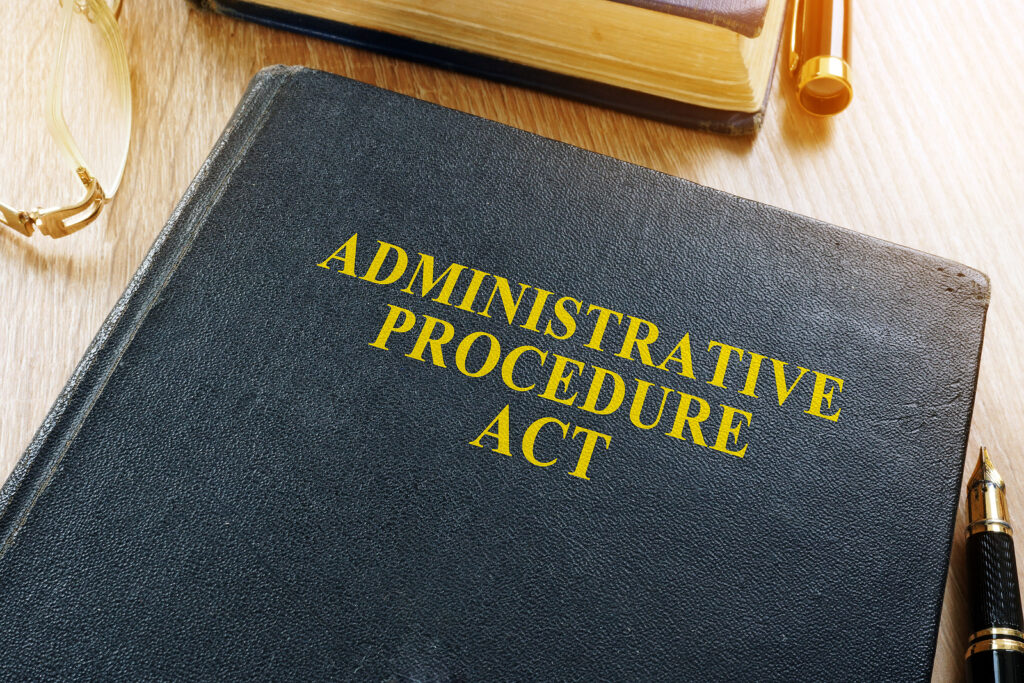Questions that come up when courts are asked about statutes dealing with Federal taxes.
- When courts look at a “tax” statute, how should they construe it?
- And if the statute pertains to matters involving the IRS, are there any special rules that go into it?
- If a taxpayer wants to question how that law is being applied by the IRS, what does the court do?
- Is it that because it is a tax statute of some kind, the IRS gets the benefit of doubt or some kind of presumption that whatever they think wins the day?
- Does the court look at the statute in question and ask if the law authorized the IRS to have done what they did?
- And what about regulations that the IRS has promulgated with regard to the statute? When they are issued, did the general public have notice of the regulation, and have the opportunity to comment on them? Why might that matter?
- How does the Administrative Procedures Act (APA) figure into all of this?

June 28, 2024–Supreme Court’s Decision in Loper Bright
On June 28, 2024, the United States Supreme Court ruled in a 6-3 decision, in Loper Bright Enterprises, et. al. v. Raimondo, that its Chevron decision from 1984 needed to be overruled. The Chevron decision by the United States Supreme Court (Chevron U.S.A., Inc. v. Natural Resources Defense Council, Inc., 467 U.S. 837 (1984)) required courts to defer to the government agency’s interpretation of a statute.
Chevron mandated courts to use a 2-step approach when interpreting statutes that are challenged before them which are administered by federal agencies like the IRS.
- Step 1: First, under this Chevron doctrine, a reviewing court must first assess whether Congress has directly spoken to the precise question at issue. If, and only if, congressional intent is clear, that ends the inquiry.
- Step 2: But if the court determines either that the statute is silent or ambiguous, the court must then, as part of the second step of the Chevron doctrine, defer to the agency’s interpretation of the statute, as long as it is a permissible construction of the statute.
At issue in the Loper Bright case was Congress’ law known as the Magnuson-Stevens Fishery Conservation and Management Act, or MSA, for short. The MSA is a law focused on management of fishery vessels operating in international waters off the US coast. Through the MSA and amendments, Congress sought to extend the jurisdiction of the US to 200 nautical miles beyond the coast and claimed exclusive fishery management authority over all fish within that area, known as the exclusive economic zone. Who is the agency that administers the MSA? The National Marine Fisheries Service (NMFS) delegated the right to do so by the Secretary of Commerce.
Essentially, at issue in the case, was whether or not the NMFS lacked authority to require Atlantic herring fishermen to pay the wages of at-sea observers, when the MSA statute was silent. Thus, the DC Circuit and the First Circuits of Appeal decided that because the MSA statute was silent or ambiguous, Chevron deference needed to be given to the NMFS and “accept” what they had done and imposed on these family businesses (force them to pay the wages of at-sea monitors).
The Supreme Court reverses and remands, overruling Chevron and the 2-step approach mandated in 1984.

Review of Supreme Court’s Decision
The Supreme Court in Loper Bright has now made it clear that the focus of statutory interpretation needs to be on “independent fact finding” and “independent judicial review” and no longer insist on deference to the agency in question.
As discussed in the case, in 1946, Congress enacted the APA (Administrative Procedures Act) as a check upon administrators whose zeal might otherwise have carried them to excesses not contemplated in legislation creating their offices. The APA describes appropriate procedures for agency action and the contours of judicial review.
Section 706 directs that to the extent necessary, a reviewing court shall decide all relevant questions of law, interpret the constitutional and statutory provisions and determine the meaning or applicability of the terms of an agency action. It requires courts to hold as unlawful and set aside agency action, findings, and conclusions found to not be in accordance with the law. See Section 706(2)(A).
Essentially, Loper Bright reiterates that courts are to decide legal questions by applying their own judgment. Courts, not agencies (like the IRS) will decide all relevant questions of law arising on review of agency action, even those involving ambiguous laws and set aside any agency action which is inconsistent with the law as they interpret it. It prescribes no deferential standard for courts to use.
That being said, the Loper Bright decision does say, in its 6-3 decision, that under APA Section 706, judicial review of agency policymaking and factfinding must still receive recognition and be considered. The test to apply is found in Section 706(2)(A):
- Agency action to be set aside if arbitrary, capricious, or an abuse of discretion, and agency fact finding in formal proceedings to be set aside if unsupported by substantial evidence. Impact on IRS Determinations and Regulations
So, what will be Loper Bright’s impact on the IRS moving forward? Well, no one yet knows.
However, it does appear that by insisting on conformity to the APA’s rules on how to stop perceived “excesses” by agencies and insist on independent fact finding and independent judicial review, the Supreme Court no longer allows for any kind of test that leaves too much deference in the hands of the IRS when construing “tax” statutes.
The test under Section 706(2)(A) serves as a reminder that the IRS will now need to support any fact finding they make in their determinations with “substantial evidence.” And APA decisions (or even Tax Court or other federal court decisions) in the past that have focused on how IRS action was arbitrary, capricious, or an abuse of discretion, presumably are good law.
The issue might very well be this: does the statute in question cross-reference expressly to the delegation to the IRS to implement the statute by regulation, and if so, do those regulations represent reasoned decision-making? And is the IRS action itself in question one that was taken, based on such regulation, or otherwise? Prior decisions more strictly aligned with the APA standards that are untainted by Chevron-like deference, whether through the use of presumptions or otherwise, seem to be good precedent, whereas those that show Chevron-like deference are likely to be subject to challenge. Practitioners need to be especially mindful of how presumptions favoring the IRS are utilized by the courts in the past (for e.g., presumption as to the correctness of IRS notices of deficiencies and assessments contained therein), to determine if these presumptions originate out of Chevron-deference. Regardless, the impact of Loper Bright remains to play out, and practitioners and taxpayers having questions about tax statutes are well advised to thoroughly familiarize themselves with the APA, the focus on notice-and-comment requirements, and other aspects of judicial review standards.